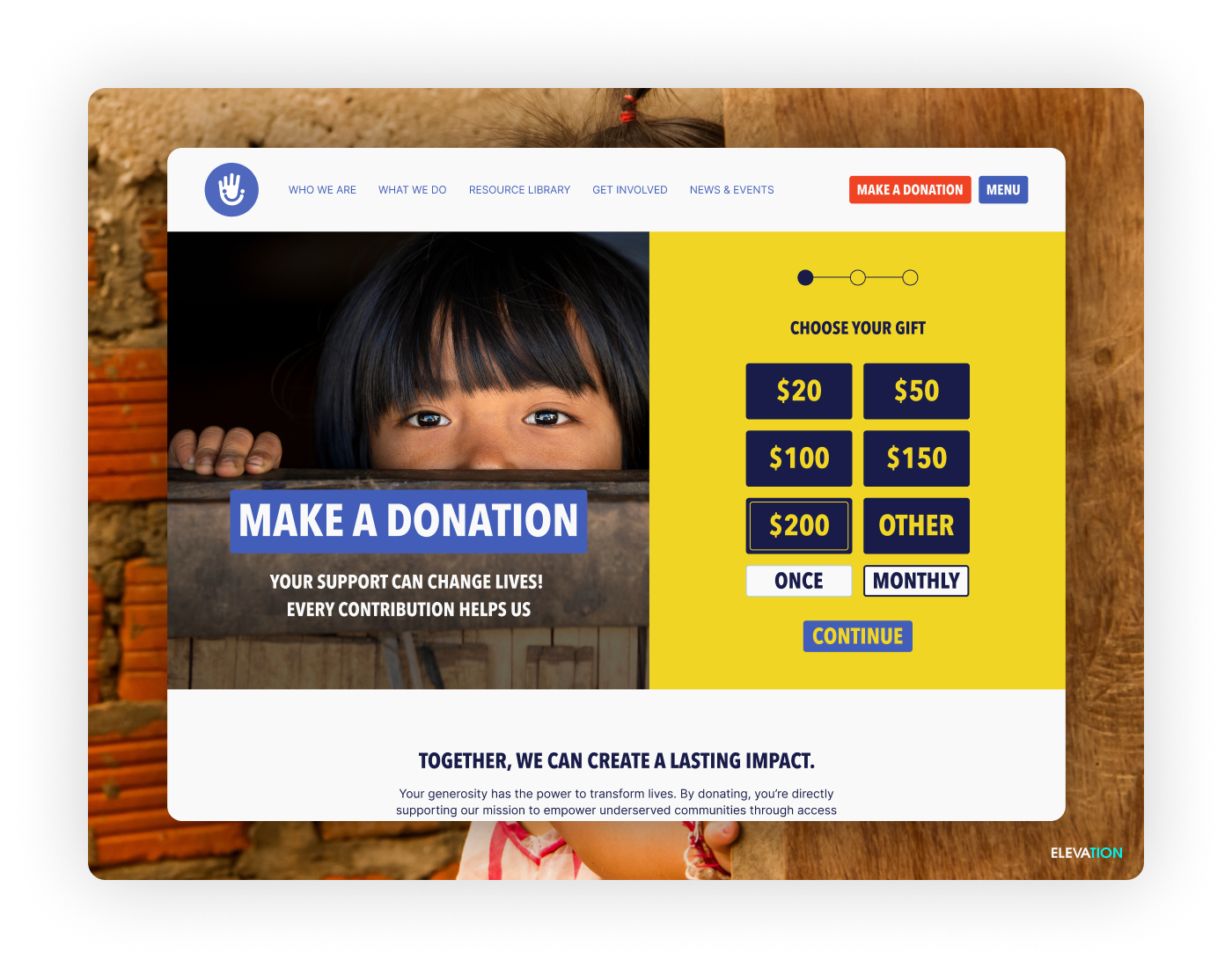Learning how to properly market your mission is vital to the success and longevity of your organization. With the right marketing strategy, you can boost engagement, raise brand awareness, and make a lasting impact.
If you want to take your strategy to the next level, you need to collect and analyze marketing metrics. Data-driven marketing pushes your team to make more informed decisions that convert prospects into committed donors.
In this guide, we’ll introduce the top four marketing metrics that all nonprofits should track, including:
- Conversion Rate
- Website Traffic
- Social Media Engagement
- Email Open and Click-Through Rates
By factoring information gathering into your nonprofit marketing plan, you can ensure that your promotional efforts are headed in the right direction. Let’s get started!
1. Conversion Rate
When you run a promotional campaign, it’s critical to measure how many people your campaign converts. Conversion rate refers to the number of people that receive your marketing materials and take the appropriate steps to transform into a supporter, donor, volunteer, subscriber, etc.
Let’s say you want to know how many site visitors clicked your website’s “Donate Today” button and filled out your donation page. You would measure the number of form submissions, and divide it by total visitors.
For example, say you run an email marketing campaign that brought 200 visitors to your business’s landing page. Then 100 of those people converted to donors by submitting the form. The campaign conversion rate is 50 percent.
If your conversion rate is considerably low, take a closer look at your calls to action (CTAs) to ensure they encourage viewers to take the appropriate next steps.
To be effective, your CTAs should use strong, urgent language that inspires immediate action, such as “Advocate for Dogs in Need” or “Donate to End Hunger Today.” Surround the statements with white space and use a bold color to draw attention to these important buttons and links. You can also run split tests, driving half of your traffic to one version of the CTA, and the other half to a different version to see which is more effective at facilitating conversions.
When you know your campaign conversion rates, you can make smarter decisions about where to invest your nonprofit’s marketing dollars next. For instance, if your Twitter promotion only generated a five percent conversion rate while your direct mail campaign saw a 20 percent conversion rate, you would know where to focus your time and resources.
2. Website Traffic
Your nonprofit website is the backbone of your digital marketing efforts. From posting educational blog content to collecting online donations, a well-designed site helps raise brand awareness, boost donor retention, and drive meaningful engagement.
To ensure your website is performing well, collect these key marketing metrics:
- Total page views: Page views are the number of times a page from your website is loaded in someone’s browser. In most cases, high page views mean your digital marketing and SEO strategies have been successful in driving traffic to your site. However, it’s important to measure page views against other data so you can account for any underlying issues. For instance, if your site is poorly designed and a user constantly presses the refresh button to load your page, your high page view metric could be misleading.
- Session durations: A “session” begins the moment a user lands on your site and stops when the user exits the site or becomes inactive. All user sessions are compiled into a final average duration metric that reveals how invested supporters are in your site. A higher session duration typically means that your content is relevant and targeted at the right audience.
- Traffic source: This metric estimates which traffic sources provide your website with the most visitors. The main traffic sources are referral, organic, and paid search. If you’re not reaching your target goals for paid search traffic, consider investing in a Google Ad Grant agency like Getting Attention. They help eligible nonprofits receive up to $10,000 of free advertising every month to increase traffic and conversions.
If you want to properly monitor your digital marketing strategy, consider using a dedicated tool to collect, analyze, and store these website metrics. Google Analytics, for instance, can be installed on your website and provide your nonprofit with a comprehensive overview of month-to-month success and growth.
3. Social Media Engagement
An increase in your social media follower count is great, but engagement is tied more directly to the success of your nonprofit. That’s why you should measure both the quantity and quality of your social media marketing metrics. as you watch your follower counts increase, you should also make sure that there’s a rise in interactions and conversions.
Take a closer look at these metrics to ensure your social media strategy is on the right track:
- Conversion rate by channel: If you notice that your conversion rate by channel is inconsistent, ensure your content is tailored to each platform. Instagram is ideal for images, Twitter for quick updates, and Facebook for long-form written content.
- Likes, shares, and comments on certain social posts: Take note of the types of posts that are performing best and replicate that approach in future content. Does video content receive the most engagement across your social media channels? Roll out a video series with varying subject matter such as beneficiary testimonials, b-roll footage from your volunteer events, and a personal message from your executive director.
- Follower demographics: Are the majority of your social media followers a part of the Gen Z and Millennial demographic? If so, you should create short-form content that plays well on Tiktok and Instagram, as these channels are most popular among these generations.
Most social media channels provide their own analytics tools that track who your audience is and how your posts are performing, making it easy and affordable to grow your social media presence.
4. Email Open and Click-Through Rates
Email open rate is the percentage of recipients who open your marketing emails. The average open rate for nonprofits is only 25 percent, meaning three quarters of your audience may not look at your promotional messages. To ensure your emails don’t fall into the spam or trash folder, write compelling subject lines and keep the frequency of your emails consistent.
While having a high open rate is important, click-through rate (CTR) determines how effective your emails are at moving donors through the funnel. This metric is the percentage of recipients who clicked a link in your email – in most cases, a link to your donation page.
To improve click-through rate, look for ways to make your email copy more compelling and ensure the subject matter is relevant to each recipient. Rather than sending a mass appeal to your email list, segment your contacts based on shared characteristics –such as similar locations, interests, and giving history –and tailor your messaging accordingly.
By making these small changes, you can increase your nonprofit’s email marketing revenue and deliver better value for your email subscribers.
As you collect these key metrics, you should also implement a process for cleaning and enhancing your data. According to AccuData’s guide to data hygiene, nonprofits can maximize their marketing efforts by removing duplicate data entries, updating missing information, and ensuring their metrics are correct and organized. Collecting the right data and keeping it clean will save your organization time and money down the road, so you can focus on what matters most: powering your mission forward.



